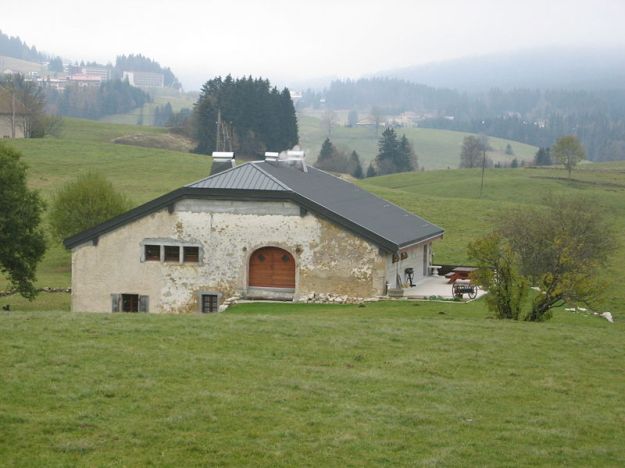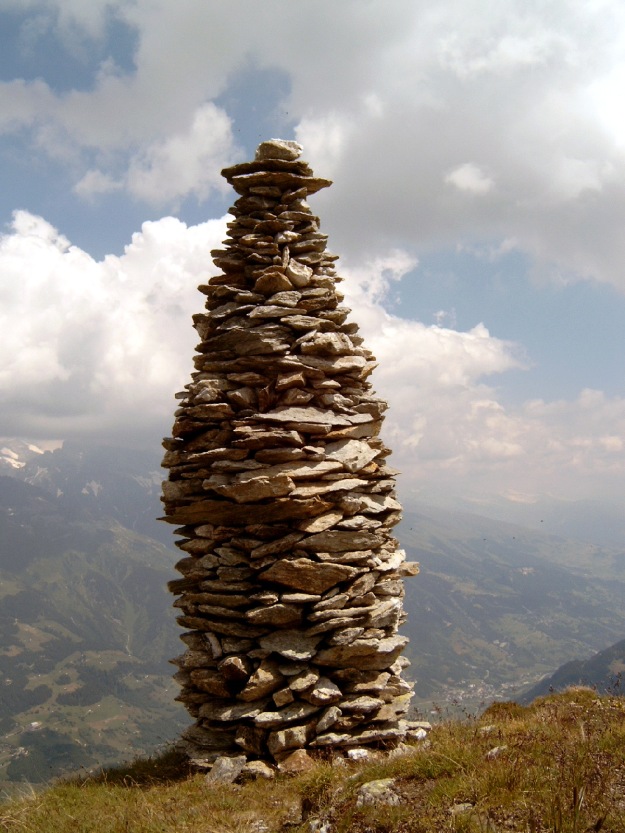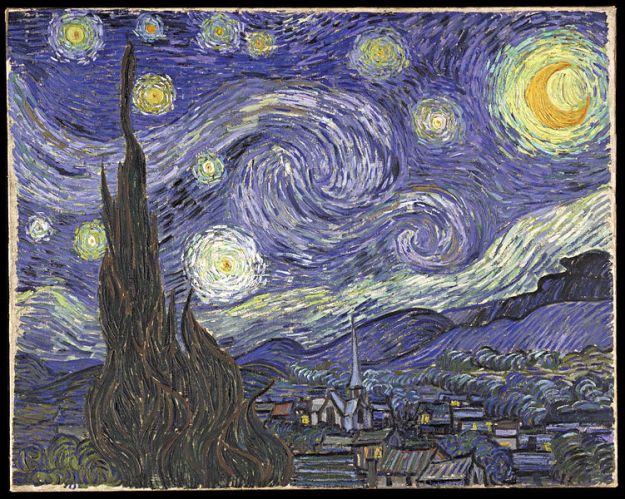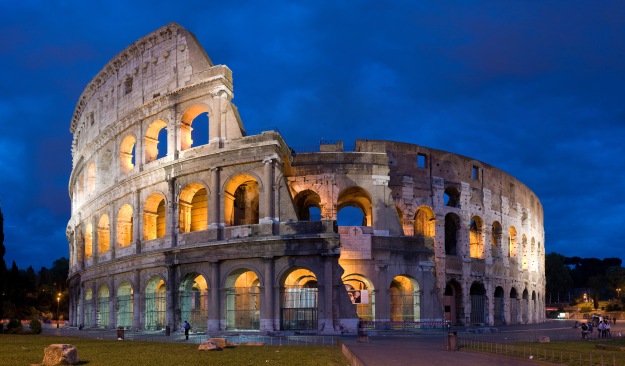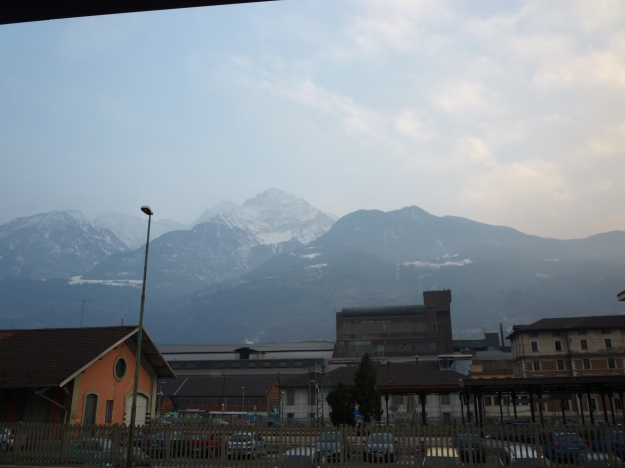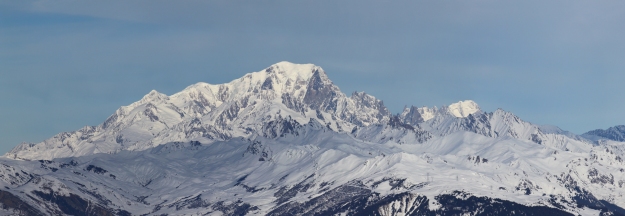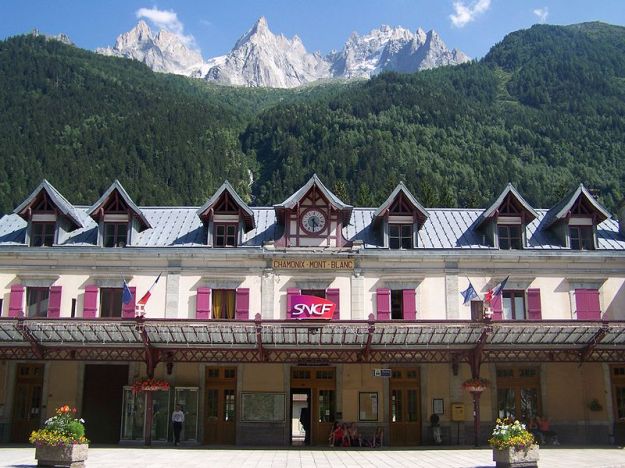The next morning Carla, Man and Narrator drink coffee at the Nieuwmarkt near the Waag in Amsterdam.
“Yesterday evening I thought of Yunmen’s [1]: “The monks hall, the Church, the kitchen, and the monastery gate” to his question: ”What is each and every person’s radiant light?” [2], when I read the the statement by the Polish Cardinal Hosius [3] – attending the Council of Trent [4] that had taken place with several intervals between 1545 and 1663 AC to find an answer within the Catholic Churcht on the Reformation – about the Bible: “If the Church did not exist, then the bible was as unbelievable as the tales of Aesopus” [5]. During this Council the decision had been taken that the revelation from the Holy Scriptures can only exists together with the tradition of the Church, whereby the Latin Vulgate Translation [6] of the bible – an adapted rendering in Vulgar Latin from 400 AC – should be the standard text of the Holy Scripture for the Catholics. What answer might Yunmen have given to Cardinal Hosius?”, asks Carla.
“I think an answer similar to the comment on this Buddhist question: “Even if the Church and the Bible are the ancestors of Buddha, they cannot avoid being each and every person””, says Man.
““The Universe – including the Church and the Bible – embody the radiant light [7], people of immeasurable greatness are tossed in the ebb and flow of words [8]”, and as hard-handed Zen master Yunmen will pinch the nose of the questioner – and hereby himself and the entire universe – with the words: “Look the radiant light – work hard to the enlightenment of all and everyone”. Shall we visit the Oude Kerk”, says Narrator.
 [9]
[9]
Carla, Man and Narrator walk via the Monnikensteeg and the Oudekennissteeg to the bridge near the Oudekerkplein at the Oudezijdsachterburgwal.
“In the first half of the thirteenth century a small wooden chapel with a graveyard had stood on the site of the Oude Kerk. In the second half of the thirteenth century this wooden chapel had been replaced by a stone hall church. This church had probably belonged to the Church parish of Ouderkerk aan de Amstel. Starting from 1334 AC, Amsterdam got its own parish with at this place the parish church dedicated to St. Nicholas, the patron saint of sailors. In the beginning of the 15th century AC a new parish had been started in the western part of Amsterdam with a new parish Church. From that time both parts of Amsterdam were named Oudekerkszijde and Nieuwekerkszijde, or abbreviated with the Oude- and Nieuwezijde. For the time being the Oude Kerk remained the main church of Amsterdam. Over time, the Oude Kerk had been rebuilt and enlarged many times: this can be seen clearly from here. In 1655 the cemetery around the old church had been cleared. Herewith the nowadays Oudekerksplein around the Oude Kerk was created [10]. Shall we enter the Church?”, says Narrator.
 [11]
[11]
Carla, Man and Narrator enter the church.
“Upon hearing your introduction I was reminded of a reference to a quotation of Herakleitos [12] in a book with work of the architect Aldo van Eyck [13]; freely rendered: “You cannot enter the same Church twice”, says Man.
“During the iconoclasm of 1566 AC in Amsterdam the altars of the Oude Kerk were damaged. After the Alteration of 1578 AC – whereby the Catholic administration in Amsterdam had been deposited – the Church was redecorated for the Protestant worship. From 1584 to 1611 AC – the year wherein the Beurs of Hendrick de Keyser was opened at the Rokin – the Oude Kerk had served as a hall of exchange for traders. From 1632 AC the Church Council meetings had alternately taken place in the Oude Kerk and the Nieuwe Kerk. After the construction of the Town Hall on the Dam, the Nieuwe Kerk became more important and became finally the main church. From 1951, the Oude Kerk had been restored during 24 years, because danger of collapse threatened due to problems with the foundation. In 1994/1998 the Church had been restored again. This is in a nutshell the history of the old church”, says Narrator.
“Before the iconoclastic the Oude Kerk must have been full – or maybe overcrowded – with images of Christ, Mary and Saints for invoking support, courage and comfort in fearful times. The walls and ceilings must have been full with paintings as sermons in paint. Now with these white walls, I am reminded of a sentence by Aldo van Eyck from an article about the work of Gerrit Rietveld: “Since his Style-period, Gerrit Rietveld has usually avoided active colour and has bounded his spaces with ‘white’, perhaps because he was one of the few to create space not so much by material boundaries but by the shaping of light [14]”. Is the Church room the radiant light in the Oude Kerk ?”, says Man.
 [15]
[15]
“This is a good comparison with the art movement “de Stijl”: this movement can be seen as a recent iconoclasm and rebellion against an excessive and overly visual imagery of the Amsterdam school as we can see in the Scheepvaarhuis at the Prins Hendrikkade.
 [16]
[16]
 [17]
[17]
“As possibly Gerrit Rietveld – during his Style-period – had avoided boundaries through walls, images and painted colours, so during and after the Reformation the Protestants did not accept imagery – as comics for the uneducated – symbols and ancient practices of the Catholic Church anymore as a bridge with the eternal light of God and his revelations in the Holy Scriptures. They would like to have the possibility of direct access to God’s grace and they wished to explore his revelations by themselves. But like many small innovative communities, the church communities must face the dilemma of the transfer of the renewal to posterity. By perpetuating the transfer of the true original renewal to the offspring, the communities often inclined to a strict internal discipline with an authoritarian oppression.
During the singing of church hymns – sung by the entire congregation lustily – they would initially not be hindered by musical instruments. Later the churches noticed that an organ is sensible to connect the singing of the Church community. In the Old Church the church organ is regularly updated and expanded. This afternoon I would like to come back to the iconoclasm. Shall we go outside now”, says Narrator.
 [18]
[18]
“This innovation in religion and in political system has a downside of an unrestrained commercialism and a nearly boundless urge for conquest and conversion. I would like to come back to this subject”, says Carla.
Carla, Man and Narrator leave the Oude Kerk.
“The Oude Kerk is probably the only Church in the world where the church square is almost exclusively surrounded by brothels. This fact is honoured with a statue “Belle” with the tekst: “Respect sex workers all over the world” [19] . Everywhere I see “Belle” on my way, I am reminded of Matthew 21:23 where Jezus says: “I assure you that tax collectors and prostitutes are entering God’s kingdom ahead of you”. And when I see or hear disapproval about whores, I thinking of the Buddhist question Chao Chou’s [20] Supreme Way: “The Supreme Way is not difficult, it simply dislikes choosing”. [21]
 [22]
[22]
In 1993, an anonymous artist had place a sculpture in the pavement of the square depicting a hand holding a female breast”, says Narrator.
 [23]
[23]
“When I hear God’s Kingdom, I am reminded of my elementary school time in South Limburg. At that time – during the second world war – it came as it came, it was like it was and it went as it went. In the Catholic Church the pastor sang with a creaky voice “Credo in unum Deum [24]”, whereafter the choir continued with the beautifully sung “Patrem omnipotentem, factorem caeli et terrae, visibilium omnium et invisibilium [25]”. The men – if they went to church – played their card game in the back of the Church or they heard Mass in the portal; usually their church attendance remained limited to four times a year. Only at Christmas, Easter – the men had confessed a few days earlier so they could go to communion –, before the great procession and with all Saints’ and all Souls’ day the Church was completely full. During the consecration [26] indicated with three times the clinging of bells, everyone was silent; after the consecration the Church began to come back to life with the murmur of people.
During my high school years – after my move with my aunt to Rotterdam – I went to a Reformed Church. The whole Church sang passionately: “Thine be the glory”; the sermons were carefully listened to and at home after the church service the sermon was discussed. The intensity with which one in Holland confessed faith corresponded to the full commitment whereby one fought against the water: pump or drown. With the same intensity and fear of God the true faith – to the letter and to the spirit – was looked for and confessed.
In South Limburg the pastor or chaplain took confession behind a closed door; after the confession followed by several Our Fathers and Holy Marys in the Church – one of my classmate had once got a turn around the ears by the pastor – almost all human sins were forgiven, and through the communion the sinner was again included in the large vessel of the Catholic Church and thus in God’s mercy.
During my first year at high school – after my move to Rotterdam – I had seen with stupefaction how in the Reformed Church a sinner confessed openly to the Church community his sin; I understood that – although in this church community God’s mercy was a mystery – the sinner was included again in the Church community. Another religious believe – though it concerned only another explanation of one faith issue – could be a reason for a schism within the Church community and – therefore – a schism within families, friends and acquaintances: so important was the true faith. In 1944 during the German occupation a church schism (or liberation) had taken place within the reformed church about whether baptism is only valid if the baptised continues the rest of her/his life to profess the true faith and may have a forecast on a presumptive afterlife in God’s grace (the Synodales), or is baptism a sign of God’s promise that you may be his child whereby the baptised is called to live as a child of God (the Liberates). This schism during the worst of the German occupation was terrible and inevitable for the Church communities and for the families in question [27]. As a separate pillars both Reformed Churches continued having several schisms afterwards.
 [28]
[28]
A few years later I read in high school a sentence from the Gospel of John:
In the Word was life and life was the light for all people [29].
On Yunmen’s question: “What is each and every person’s radiant light?” I answer according this sentence from the Gospel of John: “Life”. With Mŗtyū [30] – in the Mahābhārata death in the form of a woman created by Brahman – I wonder: “Why don’t people learn to live?””, says Man.
“Why don’t people allow light in each others’ eyes”, says Carla.
“Wherein do people differ from Krishna (the charioteer) who encouraged Arjuna in the Bhagavad Gita – a small and old part of the Mahābhārata – towards entering the battle in which families, teachers and disciplines face each other in the tension between, on the one hand, world order and duty and, on the other hand, human action [31]? She/he who knows the world speak! Shall we continue this afternoon with the iconoclasm?”, says Narrator.
“That is good”, says Carla.
“May I invite you for a simple lunch”, says Man.
[1] See: http://en.wikipedia.org/wiki/Yunmen_Wenyan
[2] See: Tanahashi, Kazuaki ed., Treasury of the true dharma eye – Zen Master Dogen’s Shobo Genzo. Boston: Shambhala, 2012, p. 419 – 420
[3] See: http://en.wikipedia.org/wiki/Stanislaus_Hosius
[4] See: http://en.wikipedia.org/wiki/Council_of_Trent
[5] See: Fernández – Armesto, Felipe & Wilson, Derek, Reformatie – Christendom en de wereld 1500 – 2000, Amsterdam: Uitgeverij Anthos, 1997, p. 61
[6] See: http://en.wikipedia.org/wiki/Vulgate
[7] See also case 14 in: App, Urs, Master Yunmen. New York: Kodansha International: 1994, p. 91. Freely rendered: Someone asked: “What is the eye of true faith?”. Yunmen answered: “Everywhere”.
[8] Source of this sentence: http://en.wikipedia.org/wiki/List_of_koans_by_Yunmen_Wenyan
[9] Source image: http://nl.wikipedia.org/wiki/Oude_Kerk_(Amsterdam)
[10] Source: http://nl.wikipedia.org/wiki/Oudekerksplein
[11] Source image: http://en.wikipedia.org/wiki/Oude_Kerk_(Amsterdam)
[12] See: http://en.wikipedia.org/wiki/Heraclitus
[13] Source: Eyck, Aldo van, Writings – The Child, the City and the Artist. Nijmegen: Sun, 2006, p. 73
[14] Source: Eyck, Aldo van, Writings – Collected articles and other writings 1947 – 1998. Nijmegen: Sun, 2006, p.145
[15] Source image: http://en.wikipedia.org/wiki/Oude_Kerk_(Amsterdam)
[16] Source image: http://nl.wikipedia.org/wiki/Scheepvaarthuis
[17] Source image: http://nl.wikipedia.org/wiki/Scheepvaarthuis
[18] Source image: http://nl.wikipedia.org/wiki/Oude_Kerk_(Amsterdam)
[19] See: http://nl.wikipedia.org/wiki/Oudekerksplein
[20] See also: http://en.wikipedia.org/wiki/Zhaozhou_Congshen
[21] See also: Hekiganroku – Casus 2. Zie ook: Yamada Kôun Roshi, Hekiganroku, Die Niederschrift vom blauen Fels. München: Kösel-Verlag, 2002
[22] Source image: http://en.wikipedia.org/wiki/Oude_Kerk_%28Amsterdam%29
[23] Source image: http://en.wikipedia.org/wiki/Oude_Kerk_%28Amsterdam%29
[24] Translation: “I believe in one God”
[25] Translation: “Allmighty father, creator of heaven and earth, of the visible and the invisible”
[26] See also: http://en.wikipedia.org/wiki/Consecration
[27] See also: http://en.wikipedia.org/wiki/Reformed_Churches_in_the_Netherlands_(Liberated)
[28] An overview of several pillarisations of Churches in the Netherlands. Source image: http://nl.wikipedia.org/wiki/Gereformeerde_Kerken_vrijgemaakt
[29] From: John 1:4
[30] See: Origo, Jan van, Who are you – A survey into our existence, Part 2: Five common realities – Facts and logic. Amsterdam: Omnia – Amsterdam Publisher, 2013, p. 124 and: Badrinath, Chaturvedi, The Mahābhārata – An Inquiry in the human Condition. New Delhi: Orient Longman Private Limited, 2006, p. 170 – 173
[31] See: Origo, Jan van, Who are you – A survey into our existence, Part 2: Five common realities – Facts and logic. Amsterdam: Omnia – Amsterdam Publisher, 2013, p. 117














